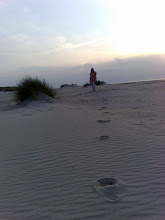Rem Koolhaas
“How to explain the paradox that urbanism, as a profession, has disappeared at the moment when urbanisation is everywhere – after decades of constant acceleration – is on its way to establishing a definitive global “triumph” of the urban condition”
The ideal model of urbanism is the functional city, described to control and develop the
In our past we have formed cities and failed so many times that we can no longer be sure or confident of the cities we live in today. These former cities have been a representation of our past; they have been formed and developed around our churches, monastery’s and remembrance of our history. This text of Rem Koolhaas discusses how our future needs to move forward to create a city that improves the quality of life as its main objective; we cannot keep looking to our past for guidance. We need to grasp a new regime of values to create a new paradigm, and it is this that will subconsciously alter our perception of how our future cities should form.
“Now we are left with a world without urbanism, only architecture, ever more architecture. The neatness of architecture is its seduction; it defines, excludes, limits, separates from the “rest” – but it also consumes. It exploits and exhausts the potentials that can be generated finally only by urbanism and that only the specific imagination or urbanism can invent and renew.”
